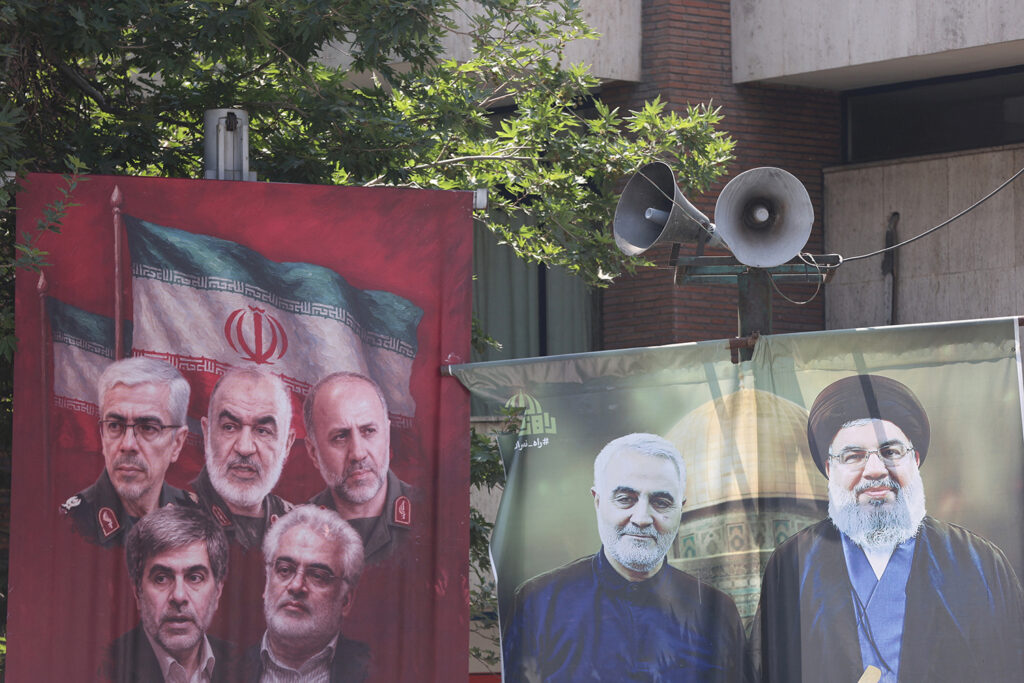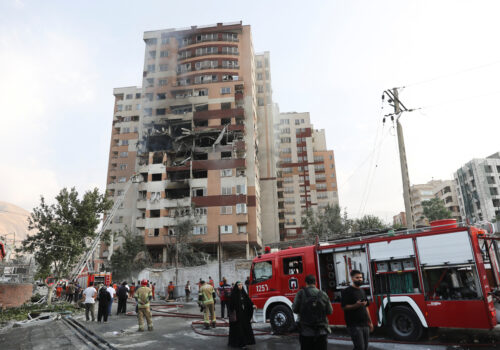Israel’s “Operation Rising Lion” against Iran, launched early Friday in the Middle East, represents an evolution in how democratic nations can prepare for and execute preemptive operations against peer adversaries.
By fusing years of intelligence preparation with special operations capabilities, Israel achieved strategic surprise and devastating effect against Iran’s nuclear program and military leadership despite months and years of mounting tensions. The operation offers critical lessons for Western military planners facing similar challenges with peer competitors who possess advanced air defenses, nuclear ambitions, and totalitarian control.
Of course, Friday’s Israeli strike on Iran occurred under relatively favorable conditions—already degraded air defenses, neutralized proxies, and no existing nuclear deterrent—complicating direct comparisons to potential preemptive strikes on true US peers such as Russia or China. Still, the concepts retain value worth exploring as Western militaries seek unconventional options to address emerging threats.
Anatomy of a surprise
Israel’s Mossad spy agency had smuggled weapons into Iran ahead of Friday’s strikes, establishing a base of operations from which it remotely launched explosive-laden drones and positioning short-range, precision weapons near critical surface-to-air missile systems. This multiyear preparation enabled what Israeli officials describe as a coordinated campaign targeting Iran’s main enrichment facility in Natanz, its nuclear scientists and military leaders, and parts of its ballistic missile program with devastating precision.
This three-pronged approach demonstrates sophisticated planning that Western intelligence and special operations forces (SOF) should study carefully. First, Mossad commando units deployed precision-guided weapons systems near Iranian surface-to-air missile installations, which activated immediately preceding Israeli Air Force strikes to drop Tehran’s defenses at a critical juncture. Second, specialized equipment and munitions were clandestinely emplaced across Iran to carry out the full range of attacks that achieved the effective decapitation of Iran’s military leadership. Third, explosive drone bases were established deep in Iranian territory to target Iran’s offensive missile systems at strategic sites to deny Tehran an immediate response capability.
The power of pre-positioned munitions
The most striking aspect of Operation Rising Lion was Israel’s ability to achieve tactical surprise through pre-positioned assets rather than relying solely on standoff weapons or penetrating strikes. According to Israeli security sources, Mossad operatives established drone and missile bases “in the open, not far from Iran’s air defense systems” and used vehicle-based weapons platforms throughout the country. This approach allowed over two hundred Israeli aircraft to drop more than 330 munitions on some one hundred targets during the opening strikes while facing degraded air defenses.
The strategic logic parallels successful special operations from previous conflicts. As I wrote recently about Ukraine’s experience against Russia, the core tenets of deep special operations remain constant: “the element of surprise achieved through operational security and misdirection; the targeting of high-value, lightly defended assets in the enemy’s rear areas; and the psychological impact that far exceeds the tactical damage inflicted.” Israel’s pre-positioning strategy enabled all three simultaneously.
Decapitation through intelligence fusion
The operation successfully eliminated Iran’s top military leadership, including Islamic Revolutionary Guard Corps Commander Hossein Salami, Chief of Staff Mohammad Hossein Bagheri, Emergency Forces Commander Gholam Rashid, and several nuclear scientists. This represents one of the most successful decapitation strikes in modern warfare, demonstrating how intelligence preparation can enable surgical targeting of command structures.
The targeting methodology reflects years of intelligence preparation. Israeli officials compiled detailed intelligence dossiers on senior Iranian defense officials and nuclear scientists, enabling precise targeted assassinations while conducting a coordinated campaign to neutralize Iran’s strategic missile array through airstrikes and deep-cover operations. This holistic approach—combining human intelligence, technical collection, and operational preparation—offers a template for future operations against peer adversaries.
Asymmetric air-defense suppression
Perhaps the most operationally significant aspect was Israel’s innovative approach to suppressing Iranian air defenses. Rather than relying solely on conventional airborne Suppression of Enemy Air Defenses missions, Israel used pre-positioned systems to launch precision strikes simultaneously toward designated targets with remarkable accuracy. It deployed advanced technologies mounted on vehicles that completely destroyed Iranian air-defense targets at the onset of the attack.
This approach enabled Israeli planes to achieve air superiority and freedom of maneuver during subsequent waves of the operation. The methodology demonstrates how special operations can create windows of vulnerability in sophisticated air defense networks that conventional forces can then exploit. As the West looks at China’s growing anti-access/area denial capabilities across the Western Pacific, SOF could pursue similar approaches to prevent Beijing from isolating Taiwan, Japan, or the Philippines with long-range antiaircraft systems.
The element of strategic surprise
The operation’s most remarkable feat may be that it achieved strategic surprise despite widespread expectations of Israeli action. Multiple reports over recent days suggested that US officials believed Israel could be preparing to strike Iran, with American personnel evacuated from the region and diplomatic warnings about potential mass casualty events. Yet Iran appeared unprepared for the scale and coordination of the actual attack.
This suggests that strategic surprise in modern warfare depends less on concealing intentions than on concealing capabilities and timing. Israel’s years-long preparation phase enabled operational surprise even when strategic intentions were evident to all parties. As an Israeli security official told the Times of Israel, the mission relied on “groundbreaking thinking, bold planning and surgical operation of advanced technologies, special forces and agents operating in the heart of Iran while evading the eyes of local intelligence.”
Specifically, Western defense planners should carry forward six lessons.
- The operation demonstrates how long-term intelligence-SOF fusion can serve deterrent functions while providing robust options if deterrence fails. Israel’s ability to pre-position assets and develop detailed targeting packages likely influenced Iranian decision-making for years before the actual strike. When deterrence ultimately failed, these preparations enabled decisive action rather than graduated escalation.
- The use of technologies ranging from precision-guided missiles to explosive-laden drones and vehicle-based weapons platforms demonstrates how modern capabilities can enhance rather than replace classical special operations principles. Ukraine’s recent “Operation Spiderweb” similarly shows how, as I wrote recently, “technological evolution from Lewes bombs to precision drones masks deeper continuities in special operations thinking.” SOF must continue to innovate to provide options for strategic surprise.
- Israel’s strikes provide a model for how intelligence services and SOF, through prior operational preparation, can provide robust options for national leadership. This confidence appears grounded in extensive preparation and multiple redundant capabilities that enabled coordinated strikes across multiple Iranian nuclear facilities while simultaneously targeting military command structures.
- Western nations should prioritize intelligence-SOF fusion capabilities that enable long-term operational preparation in potential conflict zones. This requires sustained investment in human intelligence capabilities, technical collection systems, and special operations units trained for extended autonomous operations in denied areas.
- Israel’s early success despite obvious tensions suggests that operational security remains achievable even under intense scrutiny. The effort relied on close coordination between the Israel Defense Forces and the Mossad intelligence agency over multiple years, indicating that compartmentalization and operational discipline can preserve surprise even in highly monitored environments.
- This operation tests the value of preemption. If Iran’s counterattacks fail to deliver a major impact, Israel’s attack could show how well-prepared preemptive action can end conflicts on favorable terms rather than beginning them. By targeting Iran’s nuclear program, missile capabilities, and military leadership simultaneously, Israel appears to have degraded Iran’s ability to sustain prolonged conflict while achieving its core security objectives.
Prime Minister Benjamin Netanyahu’s declaration that the operation would continue “for as many days as it takes to remove this threat” suggests confidence in sustained capabilities rather than one-off strikes. While Tehran retaliated Friday with drones and missiles that killed three people and caused dozens of Israeli injuries, it remains to be seen just how effective its responses will be in light of the regime’s severely degraded capabilities.
Operation Rising Lion represents the evolution of modern special operations principles established during World War II and refined through decades of irregular warfare. The integration of multiyear intelligence preparation, pre-positioned capabilities, and coordinated targeting demonstrates how democratic nations can achieve strategic surprise against peer adversaries even in highly scrutinized security environments.
For Western military planners, the operation offers both inspiration and instruction. The challenge lies not in replicating Israeli capabilities but in developing equivalent intelligence-SOF fusion that provides national leadership with robust options across the spectrum of conflict. Unlike Iran, both China and Russia possess large, survivable nuclear arsenals, which introduces significant escalation risks to any decapitation strike or preemptive action, even if conventional thresholds are initially observed. As tensions with peer competitors continue to mount, the ability to achieve strategic surprise through patient preparation rather than reactive escalation may prove decisive.
The Greek warriors who hid away in the Trojan Horse before springing forth to storm the gates of Troy would recognize the operational logic, if not the technology, used by today’s special operators. Strategic surprise through careful preparation, audacious execution, and clear purpose remains the foundation of effective special operations. Israel’s achievement lies in demonstrating how these timeless principles can be adapted to counter twenty-first-century threats while providing templates for democratic nations facing similar challenges with authoritarian adversaries.
The lesson for future irregular warfare is clear: When facing peer adversaries with advanced capabilities and nuclear ambitions, patient intelligence preparation combined with innovative special operations can achieve effects that conventional deterrence alone cannot guarantee. The investment in such capabilities may prove the difference between managing conflict and winning it decisively.
Doug Livermore is the director of engagements for the Irregular Warfare Initiative, a member of the Atlantic Council’s Counterterrorism Group, the national vice president for the Special Operations Association of America, national director for external communications at the Special Forces Association, and the deputy commander for Special Operations Detachment–Joint Special Operations Command in the North Carolina Army National Guard. He is a former senior government civilian, intelligence officer, and contractor in various roles at the Office of the Secretary of Defense, Department of the Navy, and Department of the Army.
The views expressed are the author’s and do not represent official US government, Department of Defense, or Department of the Army positions.
Further reading
Thu, Jun 12, 2025
Experts react: Israel just attacked Iran’s military and nuclear sites. What’s next?
New Atlanticist By
Our experts shed light on Israel’s major attack against Iran targeting its nuclear facilities and its implications for the region.
Fri, Jun 13, 2025
Unknowns, knowns, and early predictions about Israel’s strikes against Iran
New Atlanticist By William F. Wechsler
How long Israel’s campaign against Iran will go on is unknown. But even amid the uncertainty, don’t lose sight of what is already known—or at least what can already be surmised with high confidence.
Fri, Jun 13, 2025
After Israel’s strikes on Iran, these four questions could determine the Middle East’s future
New Atlanticist By Jonathan Panikoff
The trajectory of the Middle East could be determined by how just a few critical questions are answered the coming days and weeks.
Image: Pictures of those killed in Israeli strikes on Iran are displayed on a street in Tehran on June 14, 2025. Photo by Majid Asgaripour/WANA via Reuters.




